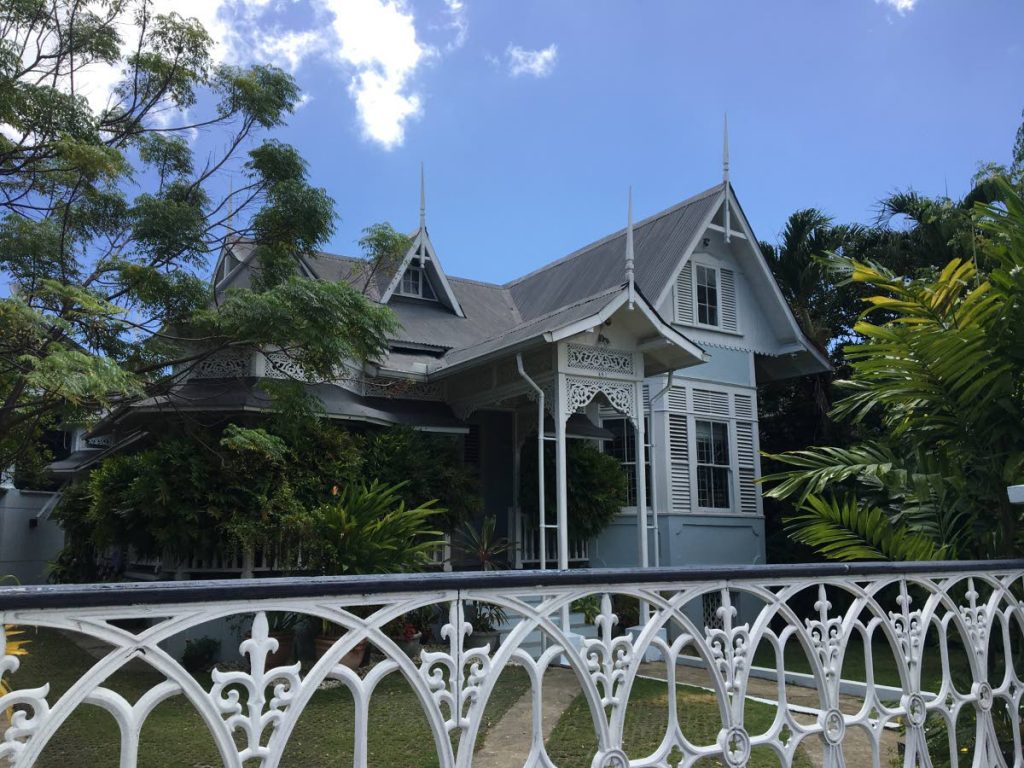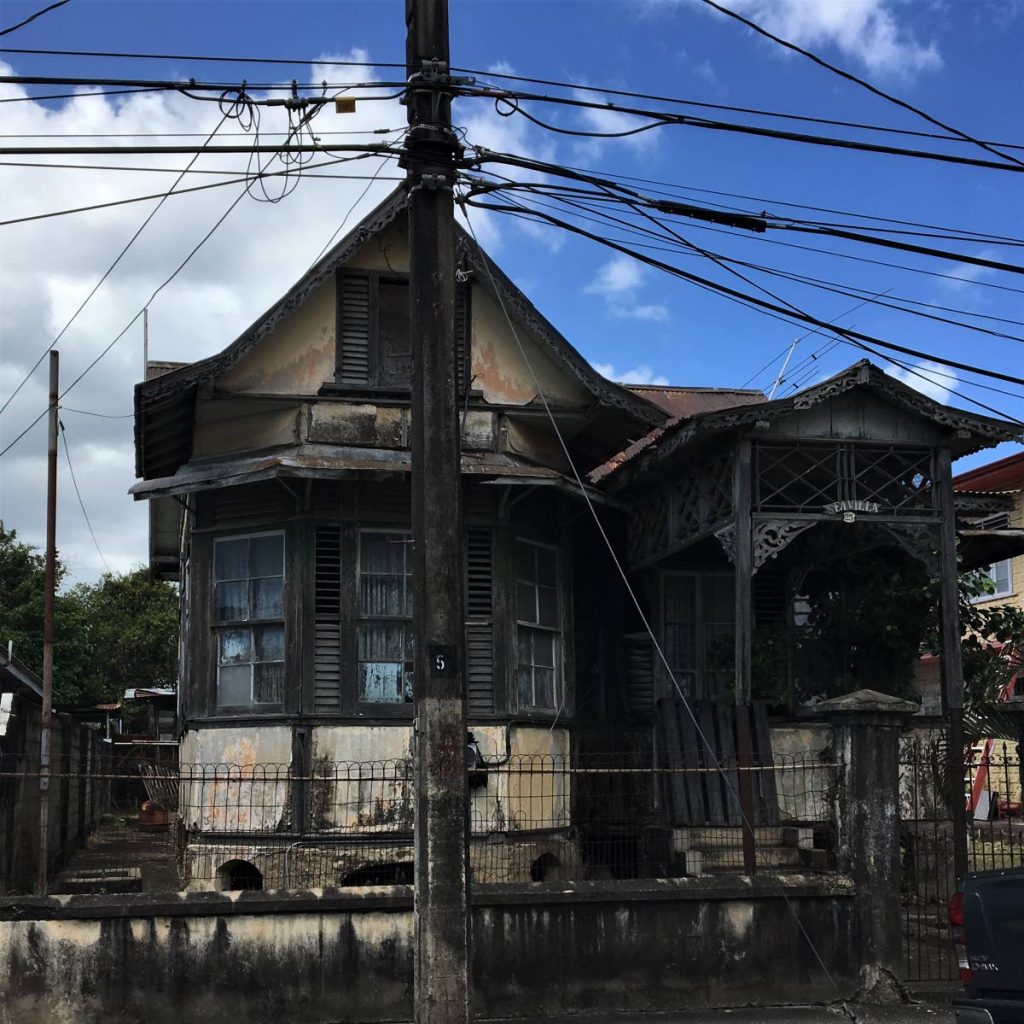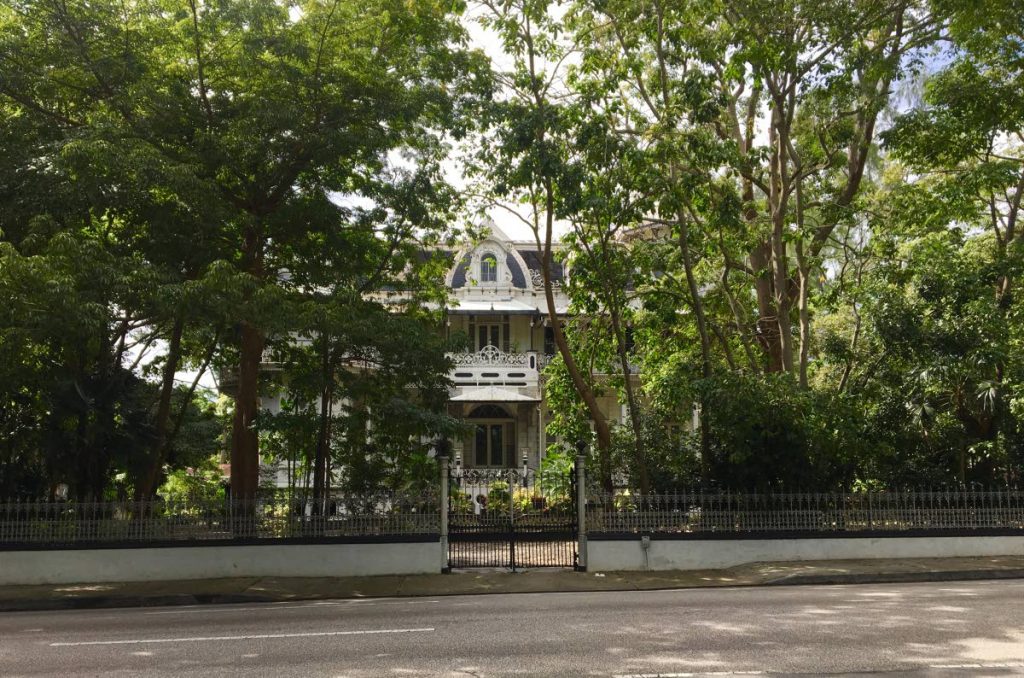Gingerbread to glass doors

I am not an architect, but by virtue of my love affair with buildings, it came as no surprise that I was immediately astonished by the beauty of the old buildings I saw in Trinidad.
Architecture has fascinated me since childhood. I always figured it was because from an early age I realised buildings always held within them endless tales.
I have noticed houses in TT built to represent wealth, as well as those of humble origins, standing on stilts. There are stunning houses that are so much more stunning than the modern boxes I noticed on the way in from Piarco airport. The modern structures are like cake boxes, with seemingly no thought or heart put into their creation – just a box for holding people and things – with an air condition unit hanging off the side. I also took note of those that seemed quite gaudy, in colours that I would imagine attract bees, with detailing that I do not quite understand. Mind you, Jamaica has its own grandiose collection of architecture that I am yet to understand.

Similarly, yet varying from what I was accustomed to seeing in Jamaica, there were some outstanding accents. The accents I noticed in the architecture reminded me of those in language.
The architecture in Trinidad, at first glance struck me as New Orleans (heavy French influence) meets Jamaica (Anglo-Caribbeanesque), with a touch of East Indian aesthetics. But I felt quite strongly that there was more than what met the eye.
Some of what I read about Trinidadian architecture validated this notion. I was excited to read an article by Lisa Paravisini on her website Repeating Islands, entitled Demolition of MacLeod House. What remained with me was her saying, “…what many of us do not see as we pass by is the Amerindian decision to keep the house cool and dry by elevating it off the ground. A decision replicated by colonial Europeans, then Africans and Asians too, once they encountered the Amerindian Ajoupa.” Paravisini said we do not see the African influence on the porch or gallery, which is a shady, cool place for socialising with people without necessarily inviting them into the inner sanctum of the home. She wrote about the French dormer windows up in the gables that let out rising hot air, and rood ridge ornaments that hark back to the Gothic or Mediterranean inspired portico to shade us from sun and rain as we traverse the walkway.

The article was an amazing exploration of how Trinidad’s architecture is yet another splendid manifestation of its racial and cultural make-up; its history and even its geographical position, and the environmental conditions which exist as a result. The gingerbread house, which was my favourite, was evidently the architectural manifestation of an island nation that captured my interest from a distance, calling me in for a closer, more intimate look.
The story told by these buildings, and how elaborate these stories are, continue to fascinate me. My imagination chronicled each set of people’s arrival in Trinidad, each adding their essential touch to what would have become notably – well, to my eye – the traditional Trini house.
In travelling through Trinidad I realised I was not seeing anything resembling a great house. There were indications of colonisation and its influences – but no physical reminder of the system under which the sugar and coffee industries were managed. No memory of slave masters’ structures. I told myself maybe I would see some as I travelled farther and wider, but then learned a lot had not been maintained, and many demolished and replaced with glass-finished buildings, resembling those on the streets of Manhattan.
Laura Narayansingh, in her web post unravelling the tale of 65 Gallus Street, made reference to the fact that permeates the Caribbean mindset: how many of us view our native melting-pot of culture with disregard and disenchantment. “We will gladly fly to Greece to observe the Acropolis, but most of us haven’t even visited the temple by the sea. Why is it that our history means so little to us?” She asked why Trinidadians are so unmoved by the historic architectural gems wilfully left to deteriorate into eyesores and urban nuisances.

I have observed countless discussions on how a middle ground between progressive approaches and retaining the beauty of our journey could be found. I have seen a marvellous collection of gems all around Port of Spain, from the Magnificent Seven around the Queen’s Park Savannah, to gorgeous gingerbreads in Maraval, in St Clair, Woodbrook – and I imagine they are still drizzled all over the island. There are those which have maintained their original form, and many which have seen contemporary modifications, all absolutely stunning. I was delighted by the fencing for Queen’s Park Plaza, an amazing modern edifice enclosed by a wall bearing traditional metalwork details reminiscent of the French influence.
Even at night I am struck by the regal grace of these structures. The silhouettes and shadows are awe-inspiring even in brisk passing. The modernised beauty along Queen’s Park West, standing beside TGI Fridays, is always a heart-warming sight. It is pure bliss to see the retention of such incredible aesthetics. Aesthetics which help to define spaces, telling the tale of a nation – from Gingerbread to Glass Doors: the history, the present and the future.


Comments
"Gingerbread to glass doors"